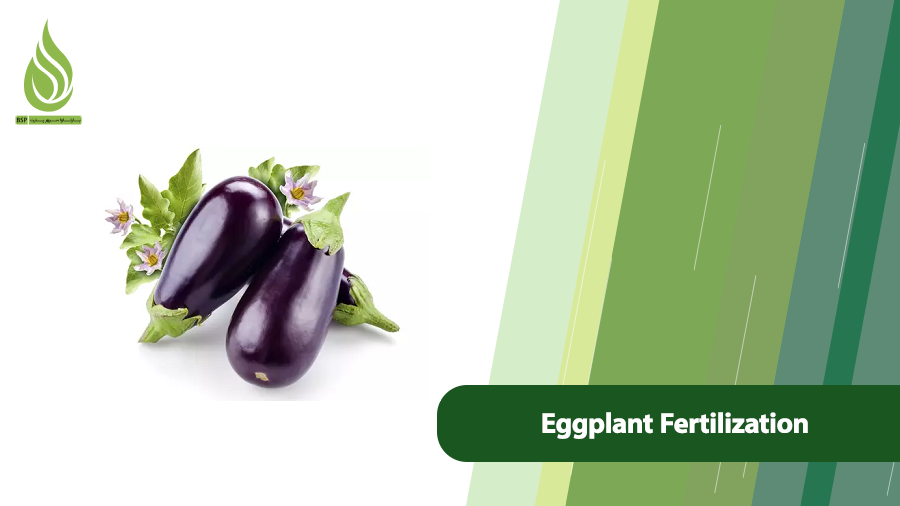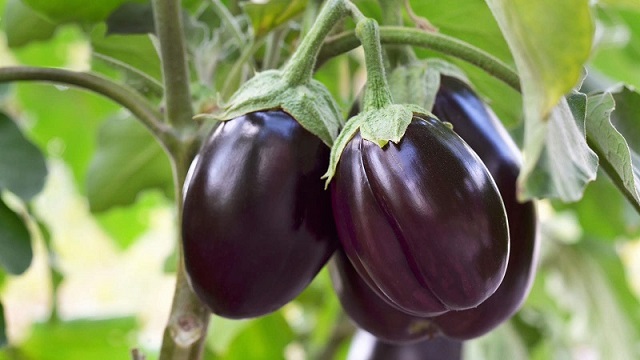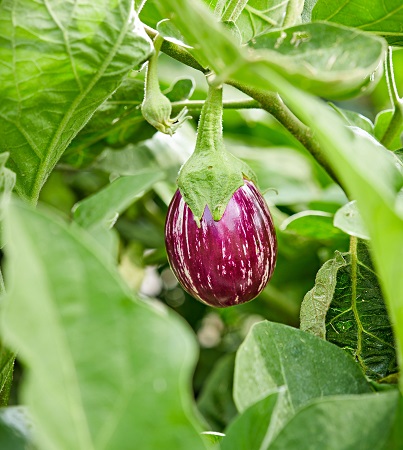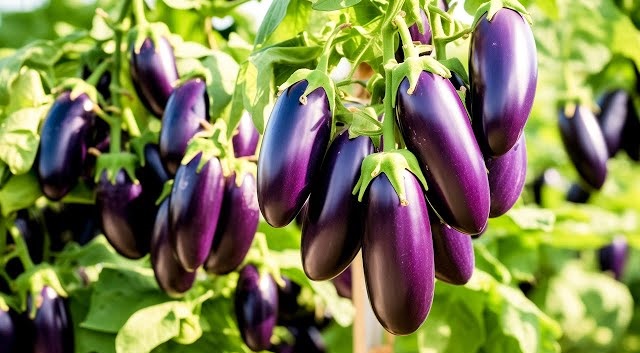
Eggplant Yield: A Complete Guide to Proper Eggplant Fertilization
Eggplant, celebrated for its endless culinary uses, is a beloved vegetable in kitchens around the globe. For farmers, growing eggplant can be a lucrative venture. But to get the biggest harvests and top-notch fruit, you need to focus on proper nutrition and fertilization of eggplant.
In this guide, we’ll break down what eggplants need to thrive and share a straightforward fertilization plan that works. We’ll also highlight the best times to fertilize for maximum impact. Follow these tips, and you’ll boost your eggplant fields’ output and bring in healthy, high-quality crops.
Why Nutrition and Fertilization Matter for Eggplant Growth?
Eggplant is a popular vegetable grown in both greenhouses and open fields worldwide. To produce large, shiny, market-ready fruits, eggplants need the right growing conditions and a well-balanced nutrition plan. Farmers often struggle with low yields, small fruits, or yellowing leaves—problems that usually come from poor or uneven nutrition, not pests or diseases.
Getting eggplant nutrition right does more than just increase your harvest. It also:
- Encourages strong growth and healthy branching.
- Boosts flowering and helps more flowers turn into fruit.
- Produces bigger, shinier, and more consistent fruits.
- Keeps the plant fruiting for longer.
- Helps the plant handle tough conditions like heat or drought.

What Nutrients Does Eggplant Need?
To grow healthy eggplants with top-quality fruits and a long harvesting season, you need to meet all their nutritional needs. If nutrients are lacking or out of balance, your plants may stop growing, and you’ll see fewer, lower-quality fruits.
Eggplants thrive on a mix of macronutrients (the big players) and micronutrients (the small but mighty ones). The table below lists the most essential nutrients eggplants need to perform at their best:
| Nutrient | Role in Eggplant Growth | Deficiency Symptoms |
|---|---|---|
| Nitrogen (N) | Boosts vegetative growth, branch and leaf formation | Yellowing of lower leaves, stunted growth |
| Phosphorus (P) | Supports root development, enhances flowering | Slow growth, pale color, poor flowering |
| Potassium (K) | Improves fruit size and quality, strengthens plant | Small, immature fruits, scorched leaves |
| Calcium (Ca) | Prevents blossom-end rot, strengthens tissues | Brown spots on fruits, wrinkled leaves |
| Sulfur (S) | Aids protein synthesis, enhances fruit flavor and color | General yellowing, similar to nitrogen deficiency |
| Magnesium (Mg) | Supports photosynthesis, maintains leaf health | Yellowing between veins on older leaves |
| Iron, Zinc, Manganese | Regulates enzymes and photosynthesis | Yellowing of new leaves, stunted bud growth |
Top Fertilizers to Supercharge Your Eggplant Harvest
Choosing the right fertilizers and using them throughout the growing season can make a huge difference in your eggplant yield and fruit quality. Here’s a rundown of some of the best fertilizers to keep your eggplants thriving:
- Ammonium Sulfate
- Delivers nitrogen to fuel fast leaf and stem growth.
- Adds sulfur to boost fruit color, flavor, and nutrient absorption.
- Perfect for alkaline soils, as it lowers pH to help plants take in nutrients.
- When to Use: Apply early in the season and as a side-dressing after your first harvests.
- Balanced NPK Fertilizer (e.g., 20-20-20 or 15-15-30)
- Packed with nitrogen, phosphorus, and potassium for quick absorption.
- Great for all-around nutrition at every growth stage.
- Potassium-Based Fertilizers (e.g., Potassium Sulfate)
- Boosts fruit size and quality during flowering and fruiting stages.
- Calcium-Based Fertilizers (e.g., Calcium Nitrate, Calcium Boron)
- Prevents blossom-end rot and strengthens fruits for better quality.
- Micronutrient Foliar Sprays
- Iron, manganese, zinc, and boron to stop leaf yellowing and keep shoots growing strong.

Eggplant Fertilization Schedule
| Growth Stage | Approximate Timing | Recommended Fertilizer | Application Method and Tips |
|---|---|---|---|
| Soil Preparation and Pre-Planting | 10–14 days before planting | Well-rotted manure + NPK base fertilizer (15-15-15 or 12-12-12) + agricultural sulfur | Mix into soil before plowing to improve soil structure and provide initial nutrients. |
| Planting to 2 Weeks Post-Transplant | Weeks 1–2 | Ammonium sulfate (50–80 kg/ha) | Side-dressing in two applications, one week apart. Promotes strong early growth and supplies nitrogen and sulfur. |
| Vegetative Growth (Leaf and Branch Development) | Weeks 3–5 | High-nitrogen fertilizer (e.g., urea or ammonium sulfate) + micronutrients (iron, zinc, manganese) | Side-dressing + foliar spray. Strengthens leaves and boosts photosynthesis. |
| Onset of Flowering | Weeks 6–7 | High-potassium NPK (e.g., 15-5-30 or 12-12-36) + calcium boron | Enhances flowering, fruit set, and prevents flower drop. Apply via foliar spray or irrigation. |
| Early Fruit Formation | Weeks 8–10 | High-potassium fertilizer + calcium (calcium nitrate) | Increases fruit size and firmness, reduces blossom-end rot. Apply via irrigation or foliar spray. |
| Continuous Fruiting and Harvest | Week 10 onward (until season’s end) | Ammonium sulfate every 2–3 weeks + high-potassium fertilizer + micronutrients | Ammonium sulfate provides nitrogen and sulfur for sustained growth and improved fruit flavor and color. Foliar spray iron and zinc to prevent leaf yellowing. |
| After Heavy Harvests | Throughout fruiting period | Balanced fertilizer via irrigation + micronutrient boost | Supports quick plant recovery, sustained flowering, and fruiting. |
Picking the Right Fertilizers for Your Soil and Eggplants
Great eggplant fertilization isn’t just about grabbing the best fertilizer. To really boost your harvest and fruit quality, you need to understand your soil’s needs, choose the right fertilizers, and apply them at the perfect time. One of the biggest mistakes farmers make is fertilizing without knowing their soil’s condition. Every soil type has its own traits that affect how plants absorb nutrients.
- Alkaline soils (high pH) make it harder for plants to take in micronutrients like iron, zinc, and manganese. Acidifying fertilizers, like ammonium sulfate, work wonders here.
- Sandy soils lose nutrients quickly, so slow-release fertilizers are your best bet.
- Heavy clay soils often have poor airflow and can build up salts, which block nutrient uptake. Overusing chemical fertilizers in these soils can damage your plants.
The smartest move is to test your soil before the growing season starts. A soil test shows what nutrients are missing, helping you create a custom nutrition plan. If your soil’s pH needs tweaking, you can fix it early to set your eggplants up for success.

Top Tips for Fertilizing Eggplants Like a Pro
Even the best fertilizers won’t work if you apply them at the wrong time—they might even hurt your plants or cut back on flowers and fruits. Eggplants need different nutrients depending on their growth stage:
- Vegetative Growth Stage: Needs more nitrogen and sulfur to grow strong leaves and stems.
- Flowering Stage: Craves extra phosphorus and potassium to spark flowering and fruit development.
- Fruiting Stage: Demands potassium, calcium, and micronutrients for big, firm, high-quality fruits.
To get the best results, create a clear fertilization schedule. Use soil test results and the eggplant fertilization plan in this guide to apply fertilizers at just the right moments.
- Water smart: Regular, proper irrigation makes fertilizers work even better.
- Nitrogen timing: Use nitrogen-heavy fertilizers, like ammonium sulfate, early in growth and after harvests to keep leaves and branches thriving. But go easy on nitrogen during flowering and fruiting—too much can lead to lots of leaves but fewer fruits.
- Spray wisely: Don’t use foliar sprays in the heat of the day. Early morning or late afternoon is ideal.
